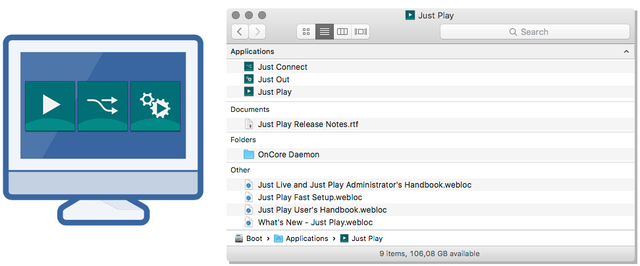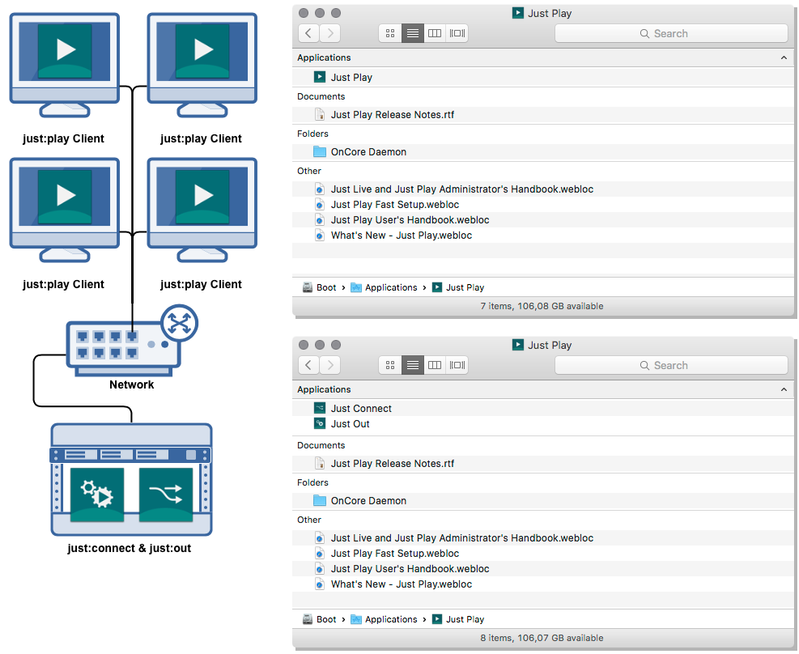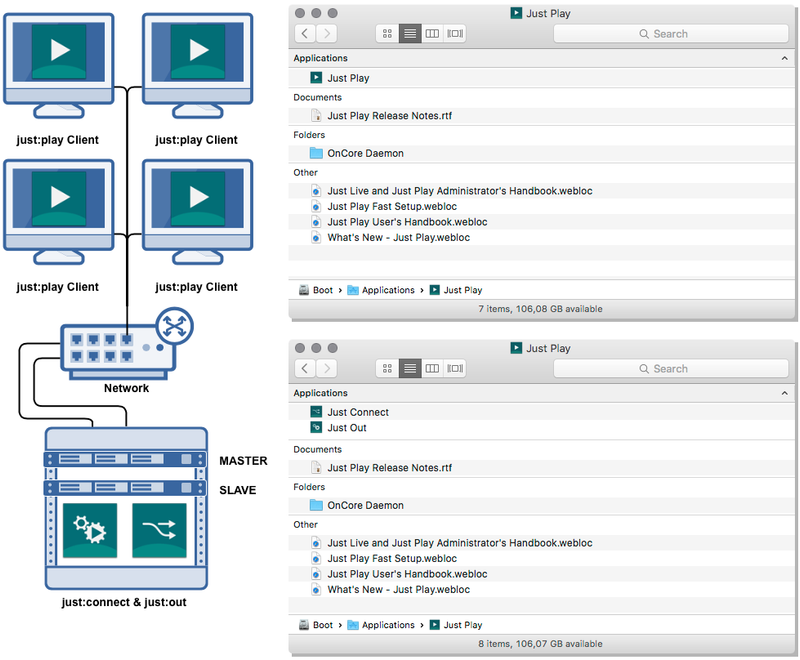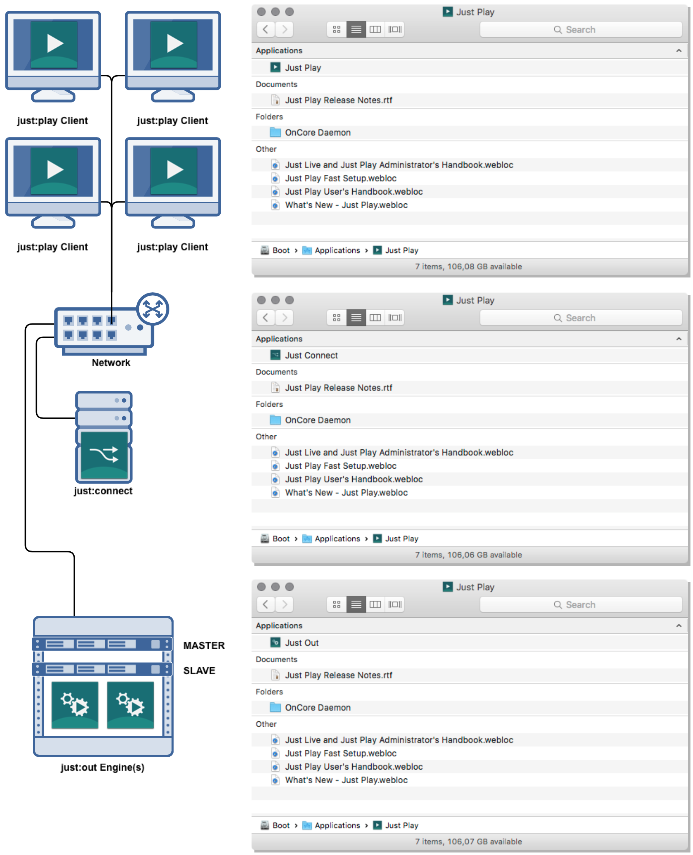6. Setup Variants (v2.5)
While it is possible to install just:out, just:connect and just:live/just:play on a single machine, there's also the possibility to distribute the playout components to multiple machines. This chapter covers different setup variants.
For detailed instructions on how to deploy just:live or just:play on a machine, refer to the chapter Software Installation.
Centralized or Distributed Playout?
Using a separate Machine for the User Interface
just:out, just:connect and just:live/just:play can be installed on a single machine, but you can also use one or several separate machines for the user interface and the engine.
The advantages are:
- Load Balancing: The actual CPU/GPU load is distributed.
- Improved Engine Stability: The engine cannot be affected by user mistakes. In addition the user working on the machine which runs the just:live/just:play user interface is able to turn off the machine without interrupting the Playout on the just:out machine.
- Failover: Using multiple machines allows for additional failover for the Playout components. just:connect allows you to configure a Slave engine for each Layer (Video or FX Layers). This means another physical machine takes the place of a failing machine.
- Multiuser Channel Editing: You can work simultaneously on a Channel on a first-come first-served basis.
Using a separate just:connect per Channel
A single instance of just:connect is able to manage multiple Channels, but you can also use multiple just:connect instances to manage your Channels separately. As there is no centralised application to setup and administrate all Channels this may be a disadvantage, depending on your use case.
- Time Base: You can use a different time base for each Channel. In contrast, when using a single just:connect, all Channels would have to use the same time base.
- Different Options: Usually there are some common denominators regarding the basic options of all Channels which one just:connect manages. When using multiple just:connect instances you can use Channels with different options.
- Eased Maintenance: In case of a hardware failure a setup with multiple just:connect instances may be easier to maintain.
Setup Variants
For simplicity only just:play is shown in the following figures. The setup is the same for just:live.
Minimal Setup
- just:out, just:connect and the just:live/just:play user interface run on the same machine.
- Most users will rely on this solution to do a Playout which only incorporates Video or Video with simple graphics.
Common & Recommended Setup
- The just:live/just:play user interface runs on one or multiple machines. These are used to create and control the schedule.
- just:connect and just:out are running simultaneously on a separate machine.
Redundant Setup
- just:connect is installed on the Master and the Slave Playout machine.
- On the Master Playout machine, just:connect is started.
- On the Slave Playout machine, just:connect is not started. In case the Master machine running just:connect fails completely, the Slave machine can take over.
- One or multiple just:live/just:play user interfaces are controlling this Channel.
- This setup can also be reproduced in cases where more than one Channel is required.
Using the optional failover:control, we recommend to use just:connect on the Slave Playout Machine and not on the Master or on a separate machine like described below (Maximum Setup). This allows to execute the failover switch even in case the master engine fails completely.
Maximum Setup
- Multiple just:out engines are available on the network.
- The engines are managed by just:connect which provides the Channel configurations in the network.
- The users can connect to the Channels with the just:live/just:play user interface.
- This setup can also be reproduced in cases where more than one Channel is required.



